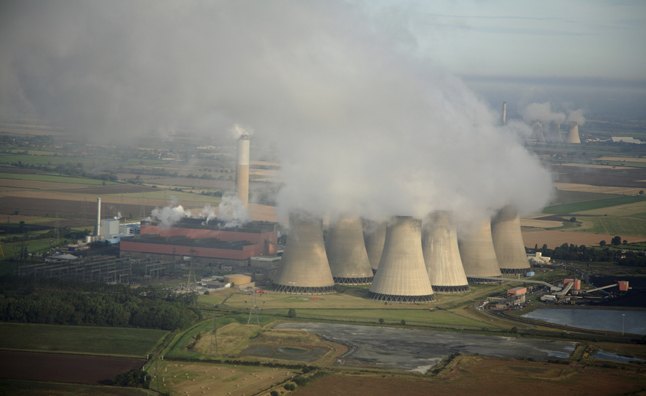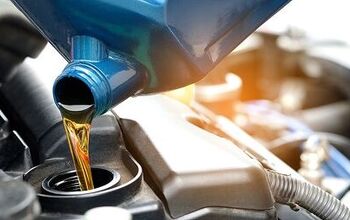Electric Vehicles Save Money, Can Also Pollute Like Gas Cars: Study

Gasoline-powered cars are slowly starting to look like pirates plundering the world for fuel and slashing environmental throats as they go. Thanks to that, the fair maiden electric vehicles with zero-emissions claims and low-cost fueling can easily float in on the smog cloud looking squeaky-clean. But are they?
A new study by the Union of Concerned Scientists (UCS) sheds light on the carbon footprint, or lack thereof, that electric vehicles have. The 60-page document goes in-depth to reveal pollution produced by recharging cars like the Nissan Leaf and the differences in cost to refuel an average gasoline-powered compact car versus charging a pure EV.
It’s true that driving an EV will almost certainly save drivers money “at the pump:” The study shows that drivers save up to $1,200 dollars annually by driving a Nissan Leaf. It also makes some basic assumptions to justify those numbers: first, that compact cars get an average of 27 mpg, second that efficient hybrids get 50 mpg, based on EPA ratings and third, gas costs $3.50 per-gallon. Those standardizations allow for the aforementioned comparison and cost savings statement.
Saving money is great, but the study isn’t solely concerned with annual fuel cost of ownership. A large portion of the UCS’ report discusses the carbon footprint produced by EVs, something people willing to suffer through range anxiety and planned charging sessions are almost invariably conscious of.
It turns out that EVs save money across the board, but can also create more greenhouse gas emissions than a traditional gas-burning car. How can this be possible?
We spoke to Don Anair, the study’s author, and he said 45 percent of the U.S. population lives under a power grid clean enough to best a Toyota Prius’ 50 mpg rating. In other words, for more than half of Americans, it’s actually less harmful to drive a Prius ($24,000 to start), which is more than $10,000 cheaper than a Nissan Leaf. Believe it or not, there are actually parts of the country where sub-compact cars are easier on emissions than an EV, here’s why.
American power plant processes aren’t uniform, and the power produced within create varying levels of greenhouse gas emissions. A table in the UCS document actually shows that less than a third of American electricity grid regions generate enough green energy to best the Toyota Prius’ 50 mpg average economy.
The study boils down to two things: cost to drive and cost to the environment. It demonstrates that they are two entirely different issues and that buying an EV doesn’t necessarily save the environment. In fact, on the country’s “dirtiest” energy grid it’s actually less harmful to drive a 2012 Volkswagen Passat TDI than a Nissan Leaf.
Anair did also point out that only 18 percent of the population lives in an area where coal-generated electricity is prominent enough to make EVs less efficient than a sub-compact.
[Source: Union of Concerned Scientists]

Luke is an energetic automotive journalist who spends his time covering industry news and crawling the internet for the latest breaking story. When he isn't in the office, Luke can be found obsessively browsing used car listings, drinking scotch at his favorite bar and dreaming of what to drive next, though the list grows a lot faster than his bank account. He's always on <A title="@lukevandezande on Twitter" href="http://twitter.com/lukevandezande">Twitter</A> looking for a good car conversation. Find Luke on <A title="@lukevandezande on Twitter" href="http://twitter.com/lukevandezande">Twitter</A> and <A title="Luke on Google+" href="http://plus.google.com/112531385961538774338?rel=author">Google+</A>.
More by Luke Vandezande
































Comments
Join the conversation
Did Rush write this piece? It is sad but one political party is so against Oboma that they choose to trash all electric cars not just the VOLT.
Another thing that is a big fail in this article is, even coal burning can be made more efficient and e carbon sequestration process made easier by using Solid oxide fuel cells to burn gasified coal. This raises efficiency of generation to over 50% vs conventional steam turbines and co-generation can raise this to over 75%. The CO2 combined with the resulting steam can be condensed into clear plastic curtains to grow algae that will sequester the CO2 and the algae can be used to creat Algol a synthetic bio fuel which would burn cleaner than current fossil fuels and need less refining. Although not an ultimate solution to the green house has problem you cut emissions immediately by 70% by making power generation more efficient and delay the excess CO2 from entering the atmosphere by creating a fuel that will be burned by more efficient ICE's.